My history with Sony mobile devices is a bit mixed. Weirdly enough it was a Sony (and its former partner Ericsson) Xperia X10 Mini that began my Android journey and believe it or not I still have the device today and it still powers up.
Sony announced the Xperia XA1 Ultra back in late February during Mobile World Congress in Barcelona, Spain, positioning the device as a super mid-range device. Of course the main feature here is the big 6-inch display alongside the second biggest feature, the 23MP rear camera.
I’m used to a larger screen device these days, having used mainly the Galaxy Note series. The XA1 Ultra fits right in this mix with the lovely 6″ Full HD though it doesn’t quite stack up everywhere.
So when the opportunity arose to take the XA1 Ultra for a test drive, I decided to put my hand up and give it a trial and see how it performs as my everyday mobile device.
So can the Sony Xperia XA1 Ultra handle a full day, or even a weeks usage? Can its battery life be more significantly better and live up to the hype Sony have claimed? Let’s have a look shall we.
What’s inside
So the XA1 Ultra really does look like a premium device and would certainly suit a person who is after that larger screen device.
The Xperia XA1 Ultra is certainly a very sturdy and solidly built device. The XA1 Ultra is a chunky device, it houses a fair amount of hardware, but in terms of design Sony could have afforded to put this phone into weight loss camp to lose a few millimetres.
Measuring 79x165x8.1 mm it’s a chunky device making for a relatively hefty 188 grams in weight.. So it’s a little bit heavy but in the hand it doesn’t feel awkward told hold or use and it certainly won’t break your hands or pockets.
The front of the Xperia XA1 Ultra comes with a massive 6-inch 1920 x 1080 resolution IPS LCD display providing a 367PPI pixel density. It’s not just the huge display that you notice on the front of the device, the second would be the huge bezels above and below the front display. Sony tout their “border-less’ displays but the one area they seemed to have missed design wise was the top and bottom bezels. To say they are huge is an understatement. would like to see something akin to a full vision or infinity display.
There’s the consideration that Sony is also doing this to maintain a unified look throughout their device catalogue as well. The symmetrical look of Xperia devices is pretty well known.
The other thing that you will notice on the front screen, and it is something you really can’t miss, the circle housing for the front facing 16MP camera. I am sure this could have been more subtly designed so as to not make it such a prominent feature and for me hurts the symmetry of an otherwise flawless design. Aside from the design of the front facing camera, the all important question of how the selfie-cam performs we’ll get to a little later.
The Xperia XA1 includes a front-facing LED ‘selfie’ flash, a somewhat redundant inclusion as it does little to help and creates a washed out photo that’s probably not worth your time. If you need a front facing LED lighting, I would probably suggest purchasing one of those LED Flashlight accessories if you need such lighting.
Centre mounted speakers are located above and below the display, with a small hole for the noise cancelling mic located nearby.
The Xperia XA1 Ultra comes with a USB-C connection, showing Sony has well and truly jumped on the USB-C train for even their super mid-range devices. The Xperia XA1 Ultra comes with a USB-C connection, showing Sony has well and truly jumped on the USB-C train for even their super mid-range devices. The USB-C port offers both a faster charge for your device, though as a USB 2.0 connection, the data transfer speeds are not as optimal as they could be. Near the USB-C port you’ll also find a bottom firing speaker as well as microphone.
Unlike a lot of the flagship devices from other manufacturers Sony has retained the 3.5mm headphone jack, which is located on the top of the phone. Personally prefer the headphone jack being placed at the bottom of any device as it can make it easier when in my wheelchair using say Google maps and wheeling. But that’s a personal choice.
On the right hand side of the phone you’ll find the dual nano-SIM/MicroSD card slots just above the silver metallic standby/on/off button switch button. Sony’s usual camera quick action button which is particularly useful for when you want to quickly grab that shot – that is if the shutter doesn’t take its time.
The rear of the Xperia XA1 Ultra houses both the rear facing 23MP camera and LED flash.
The Xperia XA1 Ultra is made with a smooth polymer plastic which is matte in texture and moulds well into the Gorilla Glass covering the display. It does feel ok but the matte smooth polymer plastic does slightly cheapen the feeling and design of the device for me personally but again I understand this can make the overall budget for the device increase in costs, but overall not a bad build and feeling.
There is, though for me one key factor really holding this device back from being able to realistically compete with other phone in the same mid-tier space – and that simply is the lack of a fingerprint scanner of any kind. That to me is a major oversight when even devices such as the entry level Alcatel A3 XL is coming with a fingerprint sensor.
Overall, Sony has done some interesting things with the Xperia XA1 Ultra hardware and design. There are some missing features which are becoming standard in this mid-tier range. As components become cheaper to include, there’s no reason not to include them.
Xperia XA1 Ultra Display
The Sony Xperia XA1 Ultra as stated earlier comes with a 6-inch IPS LCD display a 1920×1080 resolution, which breaks down to a 367 PPI pixel density. The IPS display and Full HD resolution make for a fairly impressive display to look at each and every time I pick up the phone.
Indoors, in a well or poorly lit area, the display is bright and easy to read making for a positive user experience. Occasionally fluorescent lighting can be annoying but it’s minimal. Outdoors though, I found the display to be a mixed bag, with the screen not quite bright enough to overcome direct sunlight.
Xperia XA1 Ultra Camera
Sony, generally speaking, have a good name and reputation when it comes to their camera technology and software.
However, when it comes to smartphone cameras, which let’s be honest are pretty much the new compact cameras. The main frustration I had with the XA1 Ultra was the slow shutter speed which made taking multiple pictures quickly virtually impossible.
Even manually trying to adjust the shutter speed certainly didn’t help improve things. Slow shutter speed has been an issue across a number of Sony handsets in the past, ……I urge Sony to please look at further integrating the hardware and software of their cameras to enable faster shutter speeds.
All that said, Sony have packed in a 23MP rear facing camera, providing a f/2.0 aperture meaning that your photo’s are being captured at a pretty high resolution. That is in itself a very nice surprise in the mid-range market.
Photo samples
The 5x Clear Image Zoom technology, first seen in the Xperia Z5 series is present here in the XA1 Ultra. The zoom technology means that even when zooming in on an object I found there was little loss in clarity in the final photo. It’s an impressive feat which is likely thanks to the higher resolution 23MP sensor included in the phone.
The XA1 Ultra rear camera is fairly impressive. The sensor has some issues with photos looking noisy and sometimes washed out in low-light or extremely bright conditions, but for a mid-range device it’s quite good.
The 16MP front-facing camera has an f/2,0 aperture on a 1/2.6″ sensor which includes Optical Image Stabilisation (OIS) and auto-focus. The wide angle camera lens ensures that you are able to fit a whole group of people or say objects into those selfies.
The OIS technology included in the front facing camera made for a very pleasant surprise with clear, sharp images coming out even under low-light conditions. ensures that your selfies always come out as clear and sharp as possible, even under low light.
There is also a feature for the front portrait camera in which if you hold your palm hand up towards the camera (so allow the front camera to see all your fingers on your hands), which activates the camera’s shutter to take a pic (once your hand has quickly moved away from the shot altogether) thus activating what Sony have called ‘Smart Selfie Flash’.
I found Smart Selfie Flash hard to activate instead reverting back to the familiar habit of tapping on the on-screen camera shutter button instead. To me, this feature is may have its uses in certain circumstances, it is a little bit hard to try and use unless you do become the smart selfie feature. The feature lets you step away from the camera with a group of friends to capture that all important ‘Groupie’ without leaving one of the crew out of the shot hitting the shutter button.
The 16MP front facing camera seems to provide a somewhat satisfactory selfies under clear, bright light both outside in indoors but ensures that your selfies always come out as clear and sharp as possible, even under low light, the front facing camera does struggle, even with or without the front facing LED flashlight.
Xperia XA1 Ultra Android Software, UI and Installed Apps
The Sony Xperia XA1 Ultra comes with Android 7.0 (Nougat) with security patch for the 5th of February out of the box. Sony wouldn’t comment on future security or platform updates – so it’s a bit of a mixed bag.
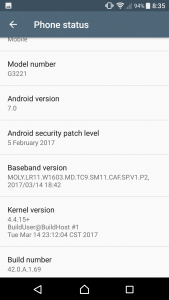
Sony has, for the most part remained rather true to the Android aesthetic. The XA1 Ultra runs the Sony Xperia UI, which is very much stock Android and it was very quick and responsive.
However, Apps and services wise. Sony they are redundant, or annoying – get rid of them!
Sony’s What’s New app has the annoying habit of delivering app update notifications which, while handy adds a step between updates directing you first to their app, then on to Google Play. Sony defaults to their own movies app over Google Play, handy if you’re in their eco-system, but if you’re not it’s again, a little annoying.
What did bother me was that some these apps are either a duplicate of stock Android apps or add little functionality and Sony should look at removing them altogether. The list includes Album, Video, Music, News and What’s new given that these apps are. What also bothered me was the constant push notifications which I found hard to disable at the best of times. Again the sooner Sony remove them the better I say – doubling up app services makes no sense.
Installed apps wise, the Sony Xperia XA1 Ultra comes with the usual Google apps such as Calendar, Drive, Duo, Gmail, Google Play, Google Play Movies, TV & the Music app as well. In relation to Sony branded apps, the XA1 Ultra comes with News, What’s New, Sound Photo, AR Effect, Spotify, Movie Creator, Video, Album and Music.
For a start the Menu is in a side-by-side orientation with apps ordered higgledy-piggledy until you specify to order by name, date installed or other combinations such as ‘Most Used’ or even your own custom order.
The Settings menu has also seen a change to a Sony inspired design. For the most part it appears to be fairly standard, but has more stylised, cartoonish icons.
Quick Settings and the Notification panel appear to have been left alone, and for this I’m grateful, and a change to any one of the myriad of third-party launchers available out there will fix any issues you have, but that Settings menu will remain.
In regards to the UI, Sony have pared down their UI compared to other devices I have used in the past -*cough*Samsung*cough*. The stock Android was fast and responsive. No Stutter or freezing was experienced and this was a positive experience for me.
The Xperia XA1 Ultra comes with 32GB on board and after installing the usual apps such as Facebook, Twitter, Telegram, Instagram, benchmark and test apps, all up I had about 15.49GB used leaving about 16.51GB left to be used.
You probably won’t ever reach that thanks to the Xperia XA1 Ultra comes with an microSD card slot which can hold an microSD that can hold up to 256GB of data. This is a generous addition to allow for photos on a holiday or storing music or video offline for a long flight. I personally won’t use it, but it’s nice to see it included.
Xperia XA1 Ultra Performance, Battery Life and Memory
The XA1 Ultra comes with an Octa-core 2.3 GHz 64-bit Processor from Mediatek, a partnership that’s been quite successful for both parties for some time now with Sony’s device’s delivering decent performance which can handle a very busy and mobile lifestyle. The 4GB RAM also help to ensure the Sony Xperia XA1 Ultra can handle a plethora of applications.
As per the benchmark screenshots from AnTutu et.c below, the device can handle most things thrown at it and can handle.
The Xperia XA1 Ultra comes with 32GB on board and after installing the usual apps such as Facebook, Twitter, Telegram, Instagram, benchmark and test apps, all up I had about 15.49GB used leaving about 16.51GB left to be used before you know things do get critical.
You’ll probably won’t ever reach that thanks to the inclusion of a microSD card slot which can hold an microSD with a capacity to hold up to 256GB of data. This is a generous addition to allow for photos on a holiday or storing music or video offline for a long flight. I personally won’t use it, but it’s nice to see it included.
Battery life
Battery wise, the XA1 Ultra with a non-removable 2700 mAh Li-Ion battery which is backed up by Sony battery saving mode, provide at least quite a solid performance in terms of battery life.
Taking the Xperia XA1 Ultra off charge say at about 8 am and with some medium usage, I still had about anywhere between 52% to 63% battery life by the time I got home which can be between 7pm to 9pm. With heavy usage along with adopting most of the battery saving options, I found that I would have about at least 19%-35% depending on how heavy I used the device.
Xperia XA1 Ultra Sound and Speakers
What can I say about the Xperia XA1 Ultra speakers? Well, for the most part the speakers are pretty bad, a concept most mobile users have come to accept with rare exceptions in this world.
The bottom rear speaker is able to provide clear audio when used as a speaker phone on a conference call.
The handset also has HD calling enabled, at least on the networks that offer it. The clarity of sound was great, but you are still dealing with fairly small, phone speakers but on the whole it’s a pretty clear sound.
While call quality was perfectly satisfactory when using the bottom speaker, when moving to multimedia use the speakers suffered. You’re far better of using headphones or a Chromecast Audio to play your music in these instances.
Even trying to change the manual settings really didn’t help to improve the speaker quality. It will pass if you have no other choice, then the speaker will struggle.
Xperia XA1 Ultra Connectivity
The XA1 Ultra comes with Dual band WiFi 802.11 a/b/g/n, which ensured a very stable WiFi connection.
Network connectivity for calls, text and data, the XA1 Ultra supports the following bands which are supported by Vodafone who sells the XA1 Ultra exclusively. You can buy the device outright from Vodafone to utilise on the Telstra and Optus networks thanks to the 1800MHz bandwidth on their networks. The only downside is that the XA1 Ultra does lack support for the 2300MHz TD-LTE required to use the Optus 4G Plus network.
Xperia XA1 Ultra Conclusion
So, would I recommend the Xperia XA1 Ultra? I am a little torn on that answer. I want to like the Xperia XA1 Ultra – there are features that I like about the device such as the massive 6-inch display, which was pretty nice. Build quality is also spot on for me and the picture quality from the rear camera despite the slow shutter issues was good.
On the other hand, there are things missing that I would have thought the XA1 Ultra would have (for example a fingerprint sensor). Then there is the slow shutter on the camera, a mistake given Sony’s reputation in the camera industry.
There is also the cheap polymer plastic body shell, which while nice, I would have preferred either an aluminium shell or unibody or pure glass body/metal frame. This to me would have added a more premium feel that I believe this device is trying to deliver but in its current form fails to achieve – but then this isn’t a high-end device so allowances have to be made.
On the software front, duplicating apps and services (aka going albums, photo editor), is something that needs to be taken into account given the multitude of Google and non google photo editing apps that can do the same if not more than what Sony apps can do. I guess manufacturers want to stand out but unless they learn and offer something more than the default Android app can do, then it’s simply not worth it.
These is why I am torn. If you are in the market for a phone with a longer lasting battery life along with a much bigger display and can live with the issues I found, then yes, I would buy the XA1 Ultra. But if you’re in the market for something with a little more of a premium feeling, then there are other options around for around the same price point.
The Sony Xperia XA1 Ultra is available exclusively through Vodafone, with plans starting from $45 per month with 2GB data with unlimited calls, text and MMS included. You can check out the Vodafone Australia website to have a look at what plans the Sony Xperia XA1 Ultra.

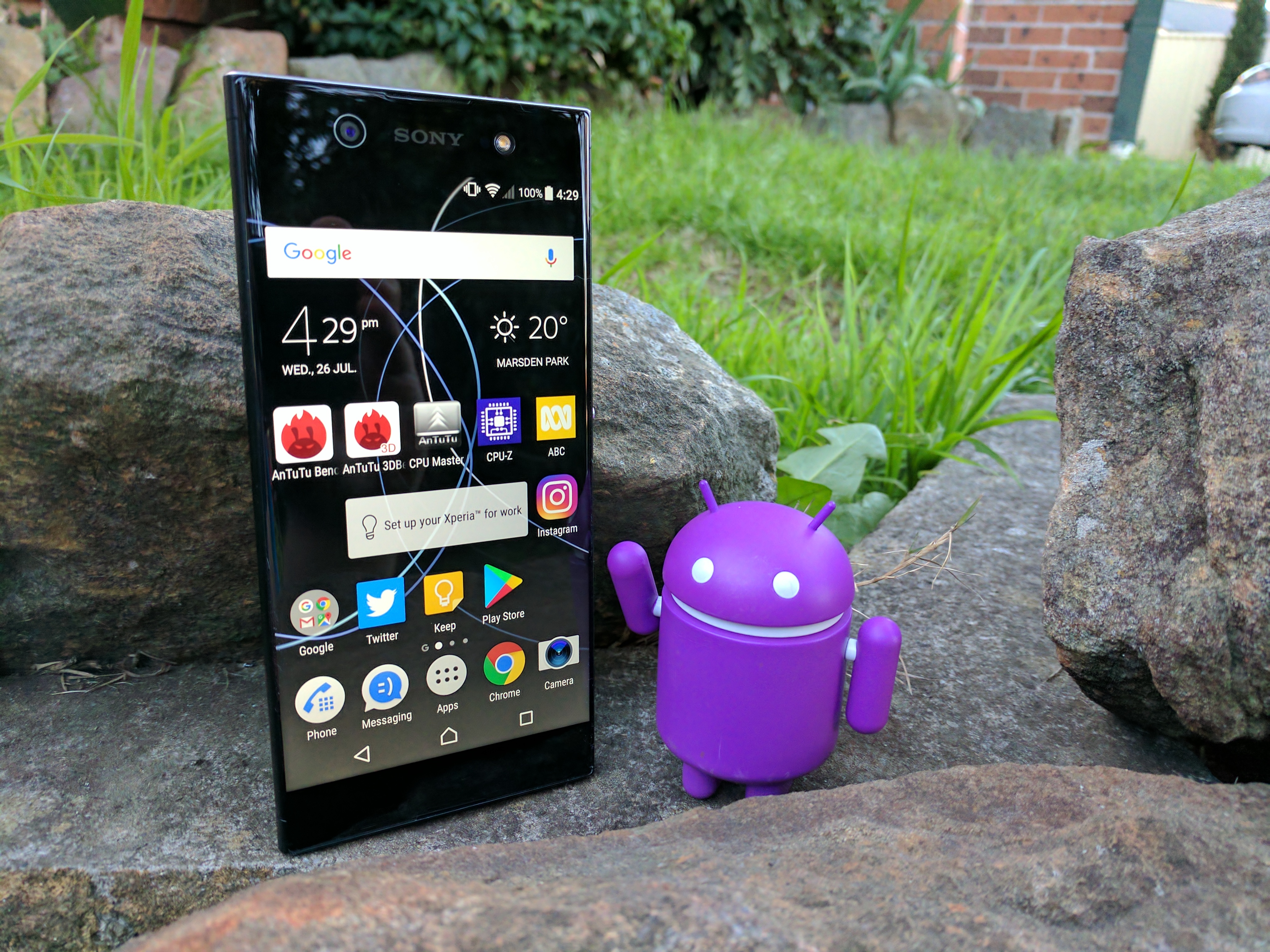
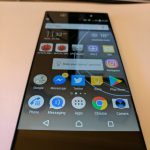
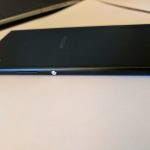
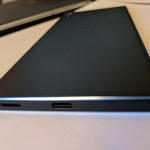
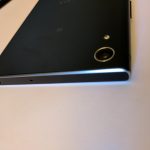
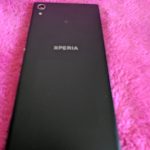
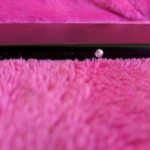
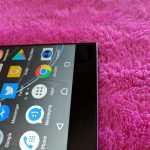
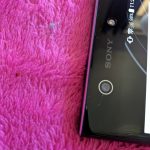
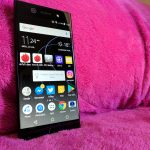
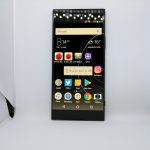

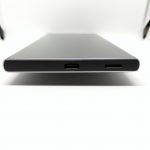

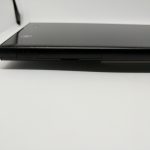
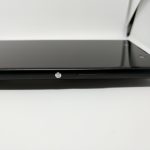

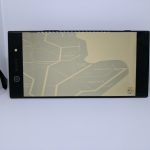
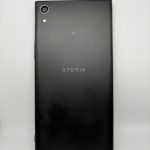
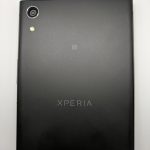
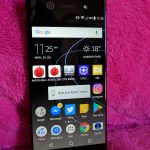












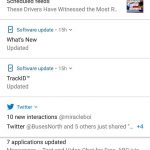
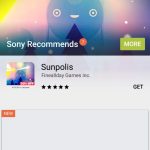


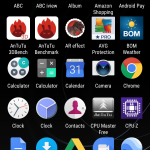
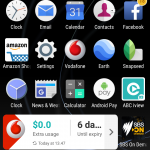

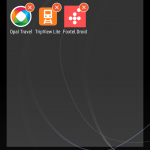

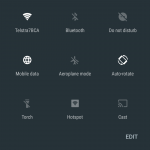




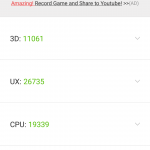
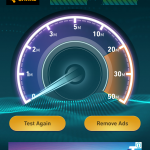
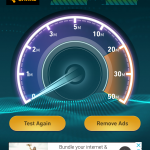




Hi! I just wanted to make a little comment on the push notifications. The game in your example (Sunpolis, amazing game by the way), is not a simple duplicate… All the in-app purchases contained in it are 50% off only for Sony users, which is great, + you get 10 free suns when you start. All the games shown in the notifications must contins some exclusive specials only for Sony users or they won’t be shown in the push notifications. So, in my opinion, the notifications are justified event if the games exist also in Google Play. Cheers! Thanks for… Read more »
I don’t understand how Sony think 19 to 23MP on a smartphone (with limited light intake) is a good idea. the Huawei P10 does a great thing by combining 20MP monochrome (more light because the light doesn’t go through R,G & B filters before registering on the sensor) with a 12MP colour image (two cameras) and reducing noise whilst enabling depth of field tricks via perspective data. I hope Sony do this soon or just use their own sensor from the Google Pixel (12MP?) and get great results out of it as the camera results have spoiled a potential purchase… Read more »